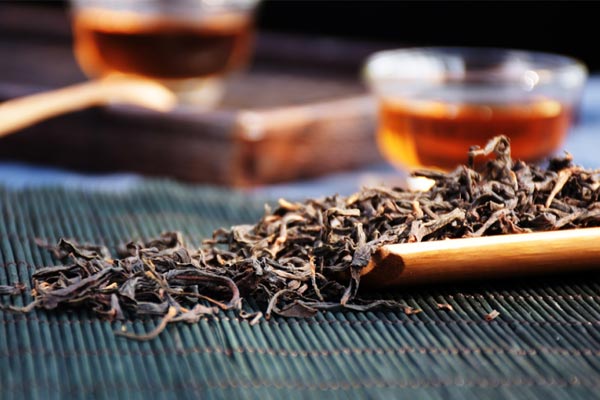"Chungui" is a natural hybrid offspring of the "Huangdan" tea plant. It possesses a rich jasmine aroma, even more pronounced than its parent, the Huangdan.
However, the exact source of Chungui's jasmine aroma has long been unclear.
Recently, a research team from the Tea Research Institute of the Fujian Academy of Agricultural Sciences published a research paper titled "Identification of key aroma components responsive for jasmine-like aroma in 'Chungui' cultivar oolong tea processing" in the journal Industrial Crops & Products, which revealed the secret to Chungui's jasmine aroma.

◆ Research Results
01. Characteristics and Advantages of Chungui
"Chungui" is a new tea variety developed by the Tea Research Institute of the Fujian Academy of Agricultural Sciences that boasts high fragrance, high quality, and the ability to produce multiple teas. It received national registration as a non-major agricultural crop variety in China in 2021.
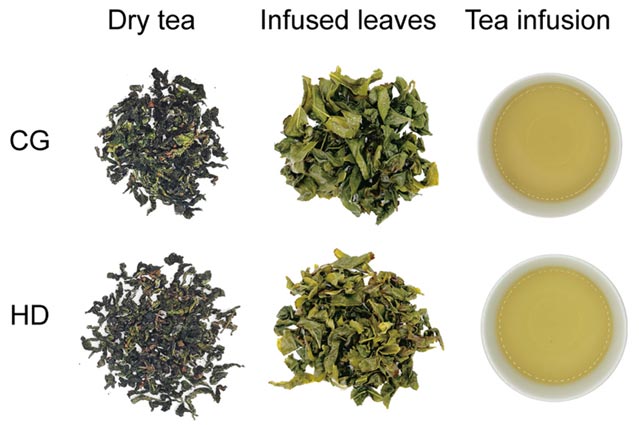
Appearance Comparison between Chungui and Huangdan
Compared to its parent variety, Huangdan, Chungui's tea has a brighter infusion, with stronger floral, fruity, and overall aromas, and a longer lingering fragrance. Huangdan, on the other hand, has more pronounced grassy and woody notes.
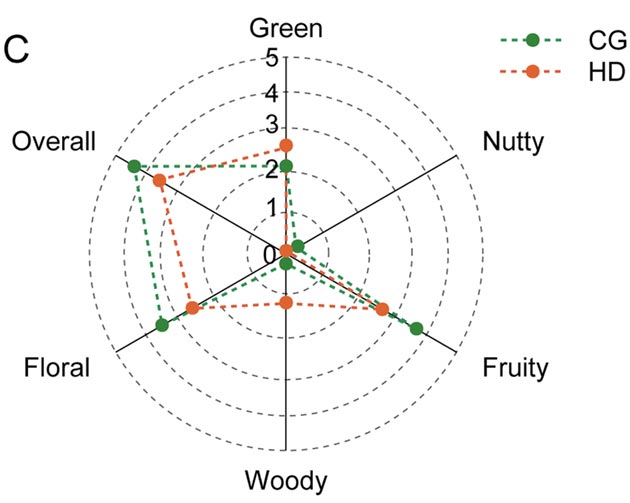
Aroma Comparison between Chungui and Huangdan
02. Key Components Contributing to Jasmine Aroma
The research team used headspace solid-phase microextraction (HS-SPME) to extract volatile components from the two teas and then identified their types and contents using gas chromatography-mass spectrometry (GC-MS).
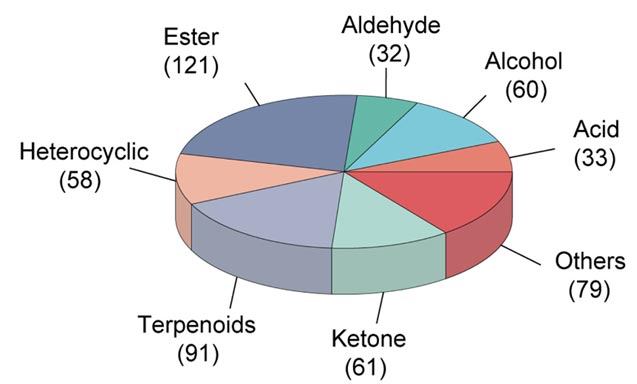
Classifications of Compounds Identified in the Two Oolong Teas
A total of 536 volatile components were detected, covering eight major categories: esters (121), terpenes (91), ketones (61), heterocyclics (58), alcohols (60), aldehydes (32), acids (33), and others (79).
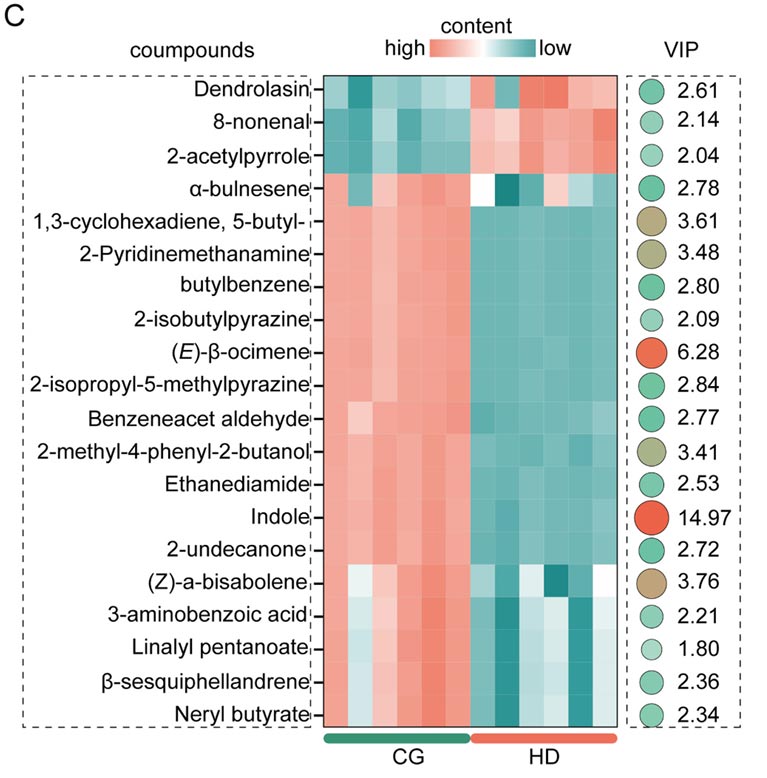
Different Compounds in Two Oolong Teas
Through OPLS-DA and OAV analysis, the research team identified four key components of Chungui jasmine's floral aroma: indole, (E)-β-ocimene, (E)-β-terpinolene, and phenylacetaldehyde.
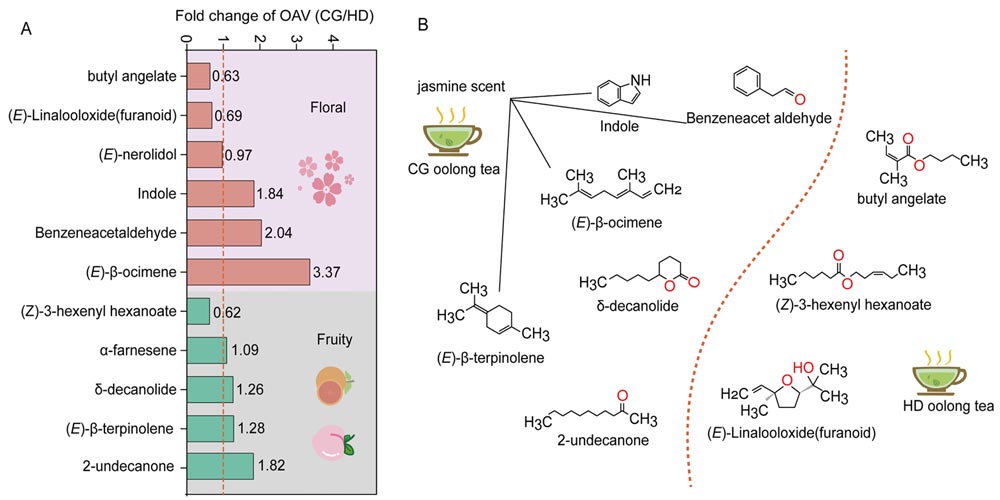
Comparison of Floral and Fruity Aroma Compounds in Two Oolong Teas
Chungui's indole content is 1.84 times that of Huangdan's, (E)-β-ocimene is 3.37 times that of Huangdan's, phenylacetaldehyde is 2.04 times that of Huangdan's, and (E)-β-terpinole is 1.28 times that of Huangdan's.
These four components are characteristic volatile components of jasmine flowers. They work synergistically in Chungui to create its unique and rich jasmine aroma.
03. Processing Accumulates Floral Aroma Compounds
In addition to the characteristics of the variety itself, the processing process is also crucial to the formation of Chungui's jasmine aroma. Researchers have found that oolong tea processing can be divided into an "enzymatic stage" and a "non-enzymatic stage," both of which jointly promote the accumulation and retention of key components.
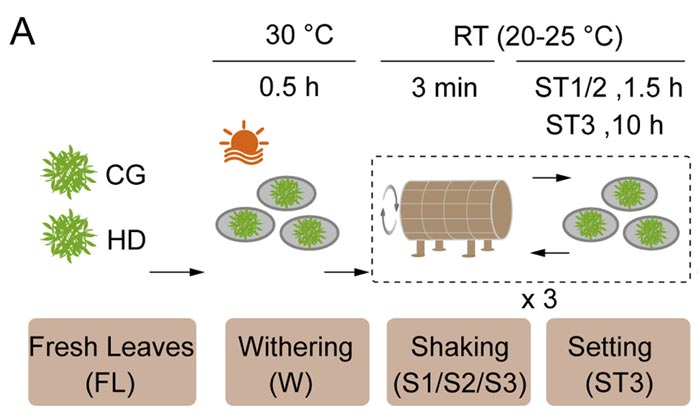
Enzymatic Stages of Oolong Tea Processing
The enzymatic stage, which includes withering, shaking, and airing, is crucial for the formation of floral and fruity aroma components (including the four key components mentioned above).
The accumulation trends of components in Chungui and Huangdan tea are similar during this stage, but Chungui accumulates more efficiently.
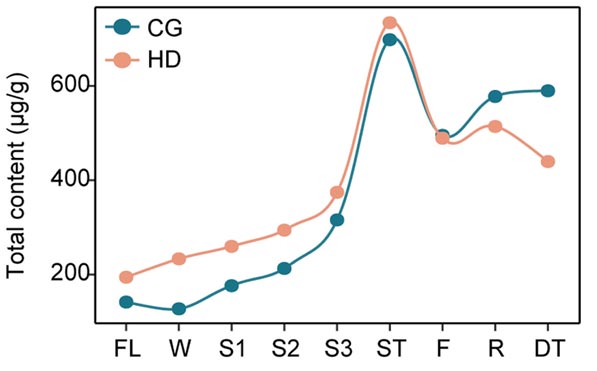
Volatile components in tea increase dramatically during the ST stage.
Particularly during the shaking and airing stages, tea cells are damaged, activating enzymatic oxidation reactions and driving the synthesis of key components.
For example, during the extended airing stage (ST3) after the third shaking, the content of 12 volatile components in Chungui increased by over 500-fold, while that of only 4 in Huangdan tea. This lays the foundation for the rich floral aroma that follows in Chungui.
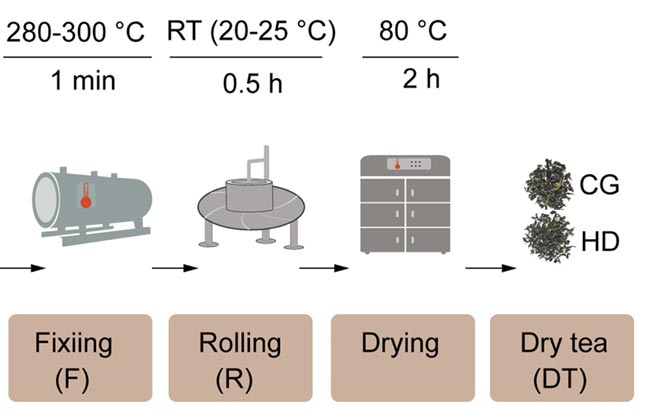
Non-enzymatic Stages of Oolong Tea Processing
The non-enzymatic stages include withering, rolling, and drying. These stages determine the ultimate retention of key ingredients and are the key to the difference between Chungui and Huangdan.
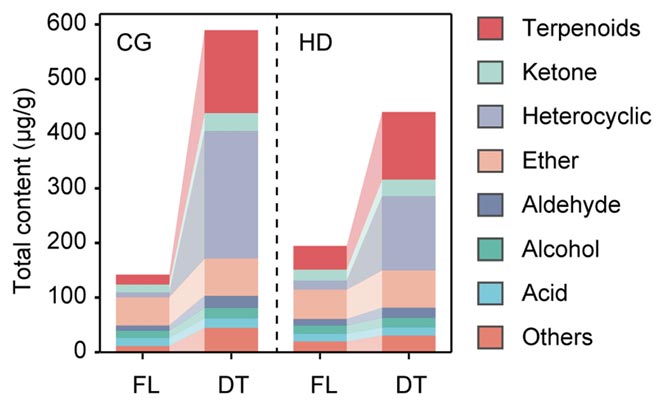
Ultimately, Chungui oolong tea has a higher overall aroma than Huangdan.
The high temperature of withering causes some components to degrade, but the loss of these ingredients in Chungui is significantly lower than in Huangdan.
During the drying stage, the volatile component content in Chungui continues to increase, while that in Huangdan continues to decrease.
This difference allows Chungui to ultimately retain more key jasmine aroma components, resulting in a more pronounced aroma than Huangdan.
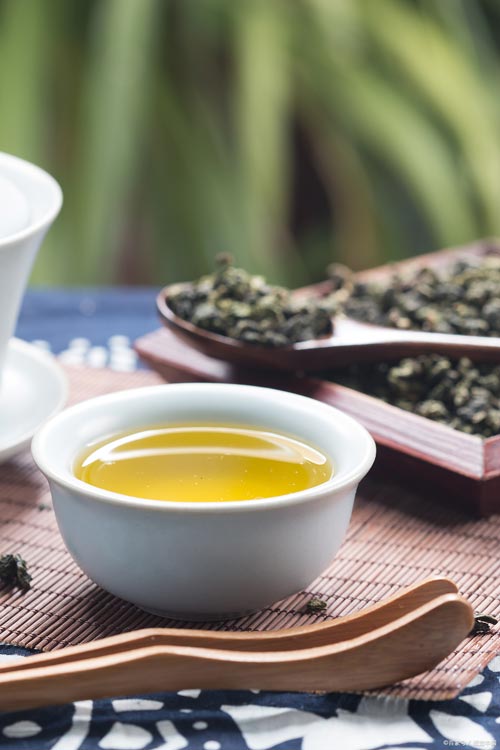
Conclusion
This study not only reveals the secrets of Chungui oolong tea's jasmine aroma but also provides scientific support for the oolong tea industry.
Future optimization of Chungui's processing techniques (such as adjusting the airing time and withering temperature) could further enhance its jasmine aroma. This study also provides a reference for cultivating tea varieties with similar aroma characteristics, allowing more people to experience the unique flavor of this high-quality oolong tea.

%20--%3e%3c!DOCTYPE%20svg%20PUBLIC%20'-//W3C//DTD%20SVG%201.1//EN'%20'http://www.w3.org/Graphics/SVG/1.1/DTD/svg11.dtd'%3e%3csvg%20version='1.1'%20id='图层_1'%20xmlns='http://www.w3.org/2000/svg'%20xmlns:xlink='http://www.w3.org/1999/xlink'%20x='0px'%20y='0px'%20width='256px'%20height='256px'%20viewBox='0%200%20256%20256'%20enable-background='new%200%200%20256%20256'%20xml:space='preserve'%3e%3cpath%20fill='%23FFFFFF'%20d='M194.597,24.009h35.292l-77.094,88.082l90.697,119.881h-71.021l-55.607-72.668L53.229,232.01H17.92%20l82.469-94.227L13.349,24.009h72.813l50.286,66.45l58.148-66.469V24.009z%20M182.217,210.889h19.566L75.538,44.014H54.583%20L182.217,210.889z'/%3e%3c/svg%3e)



